Blackpool Special Constabulary 1914-1919
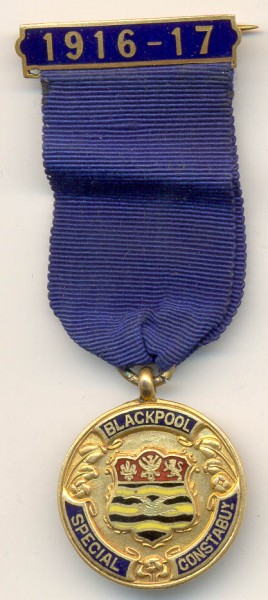
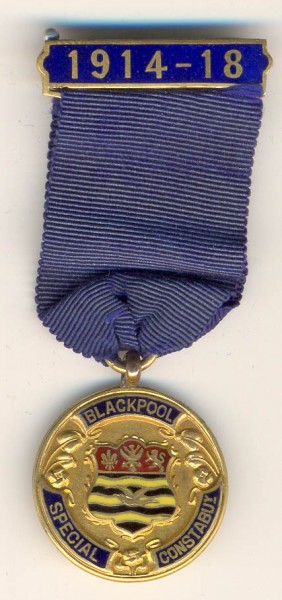
Detailed description courtesy of my friend Professor Peter Beighton.
Members of Blackpool Special Constabulary received a tribute medal from the Town Council as a reward for voluntary unpaid service in the town during the First World War. The reverse is named and numbered. The top bar indicated the years of qualifying service. In February 1919 the Watch Committee declared their intention to award these gold medals to the Specials, and in November of that year, 707 medals were received from Fattorini. All were inscribed with recipient’s name and number. They were distributed by post on 8 December 1919.
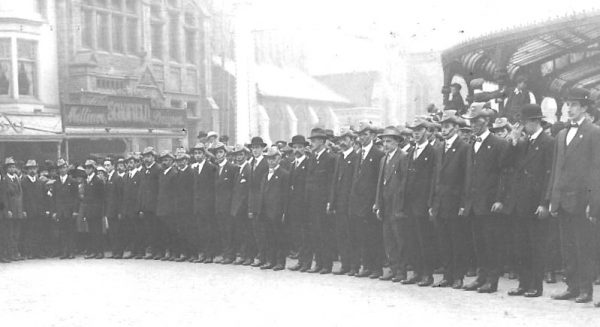
WWI Specials at Talbot Square, Blackpool
In March 1912 the Blackpool Watch Committee authorised the formation of the Police Reserve. Sixteen men were recruited and a nominal roll of 310 Special Constables was prepared.
After the outbreak of the First World War in August 1914 many of Blackpool’s regular police departed for war service. The perceived threat of enemy action and social disruption, along with the billeting of thousands of troops in the town placed additional pressure upon the depleted police force. The Blackpool Special Constabulary was formed on the 26th October and the first parade took place on the 9th November 1914. At the end of 1914, 693 men had attested for service, but this number reduced due to unsuitability, loss of interest, conscription and the lowering of the age for army service.
The wartime Special Constabulary was formally disbanded on 16th February 1919 at a ceremony in the Tivoli Picture Theatre at Talbot Square. The Chief Constable announced that a Home Office circular had requested the formation of a Special Reverse (Police) and that 266 men had already enlisted. By the end of the year the regular police had reached the normal level of 102 officers and constables, while 450 men were in the Reserve.
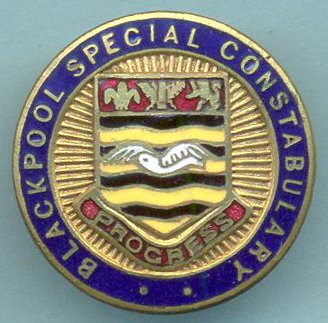
Blackpool Special Constabulary lapel badge with horseshoe fitting on the reverse
The reverse reads, ‘LEONARD DEWS EUSTON STREET BLACKPOOL’, and numbered ‘7’
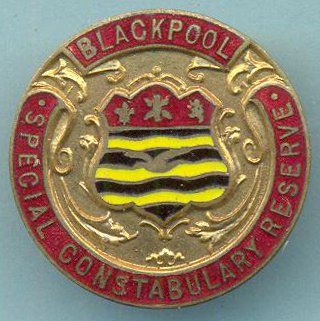
Blackpool Special Constabulary Reverse lapel badge
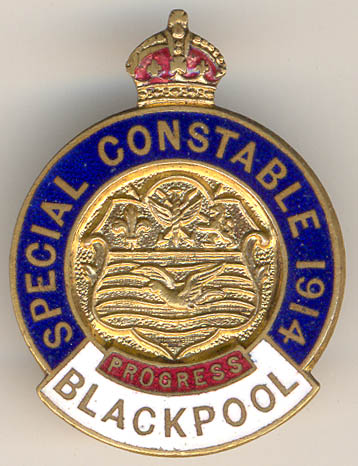
Lapel badge presented to Specials in March 1915
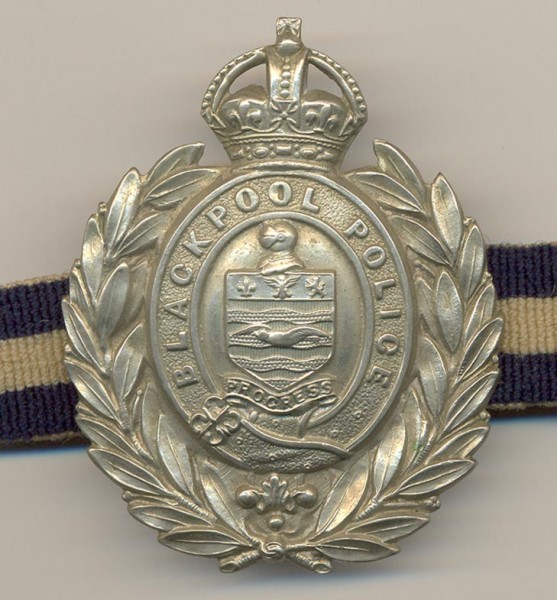
Badge worn on a blue & white hatband
While on duty the Specials wore civilian clothing with a collar and tie and a numbered armlet on the left arm. In addition, from August 1916 a silver police badge worn on a hatband gave additional authority

A large group of Special Constables in the yard behind South King Street and Albert Road – 1918
They can be seen wearing the numbered armbands and hatbands
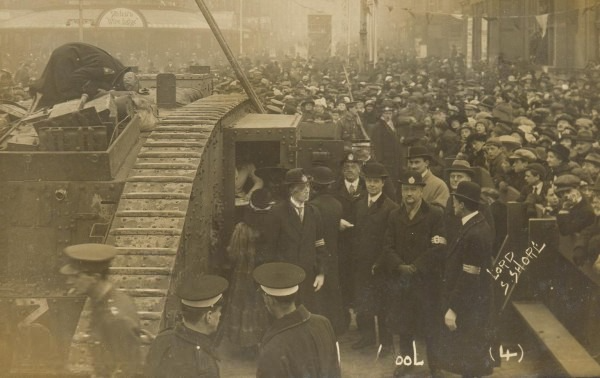
Julian the Tank Bank at Talbot Square
The men in this view can be seen wearing the hat and arm badges
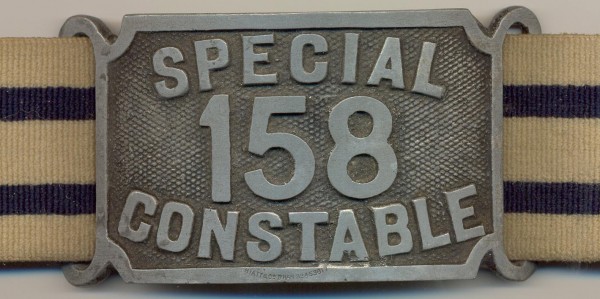
Arm band and badge. An oblong convex aluminium plate embossed with the service number. This example numbered ‘158’, belonged to Inspector Arthur P. Anderson. The maker’s details ‘Hiatt and Co B’ham, Reg 453812’ appeared at the base.
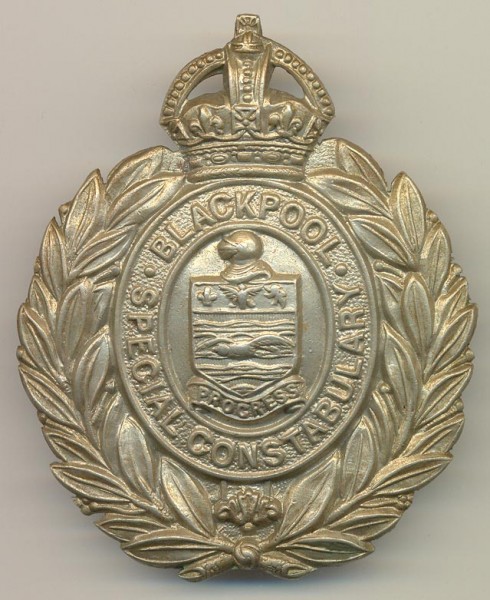
A later issue of the Special Constabulary Blackpool badge
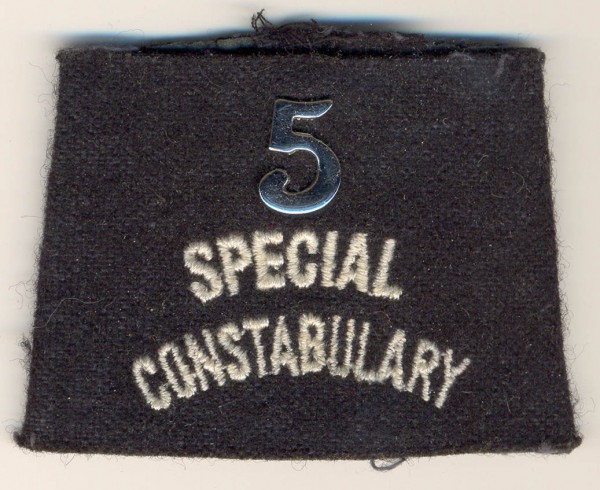
Special Constabulary shoulder badge number ‘5’

A small pin back badge ‘SPECIAL CONSTABLE BLACKPOOL 1916’
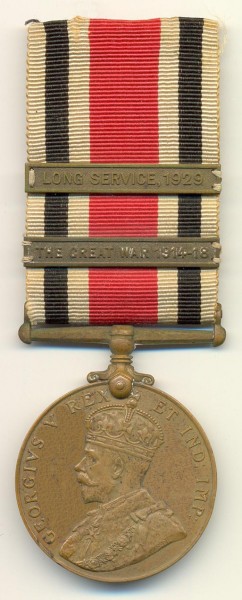
Special Constabulary Long Service medal with clasps for the Great War and Long Service. Awarded to Inspector Arthur P. Anderson
Instituted by the Government on the 30 September 1919 and awarded for 9 years unpaid service, with at least 50 duties each year. Service during WWI with the annual duties counted triple and a clasp inscribed ‘THE GREAT WAR 1914-19’ was awarded to the men who qualified. An addition ten years of service entitled the holder of the medal to a dated long service bar, the first being dated 1929. The reverse has the inscription ‘For Faithful Service in the Special Constabulary’.
The Blackpool Specials received this medal at a parade in the Central Police Building in early May 1920. The medals were presented to 131 recipients by the Chief Constable H.E. Derham. These men comprised of 22 Inspectors, 36 Sergeants and 73 Constables.

